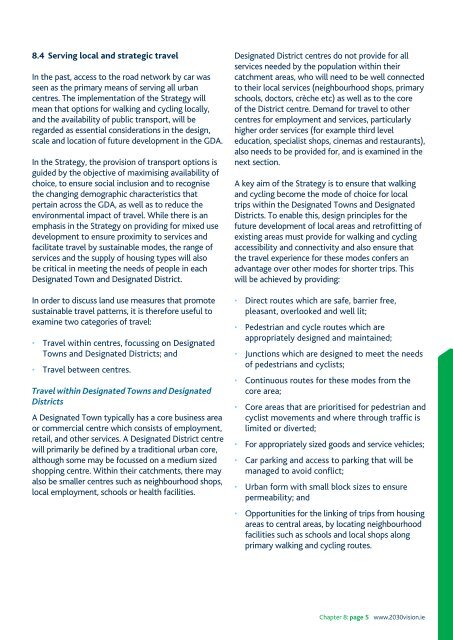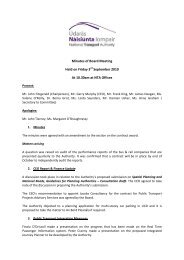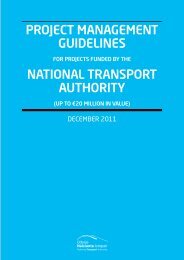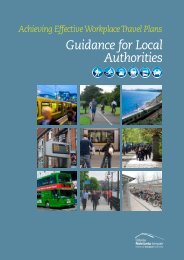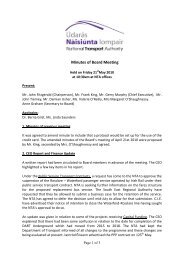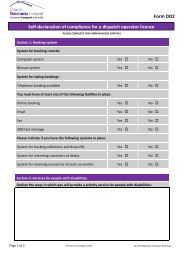Greater Dublin Area Draft Transport Strategy 2011-2030
Greater Dublin Area Draft Transport Strategy 2011-2030
Greater Dublin Area Draft Transport Strategy 2011-2030
- No tags were found...
You also want an ePaper? Increase the reach of your titles
YUMPU automatically turns print PDFs into web optimized ePapers that Google loves.
8.4 Serving local and strategic travelIn the past, access to the road network by car wasseen as the primary means of serving all urbancentres. The implementation of the <strong>Strategy</strong> willmean that options for walking and cycling locally,and the availability of public transport, will beregarded as essential considerations in the design,scale and location of future development in the GDA.In the <strong>Strategy</strong>, the provision of transport options isguided by the objective of maximising availability ofchoice, to ensure social inclusion and to recognisethe changing demographic characteristics thatpertain across the GDA, as well as to reduce theenvironmental impact of travel. While there is anemphasis in the <strong>Strategy</strong> on providing for mixed usedevelopment to ensure proximity to services andfacilitate travel by sustainable modes, the range ofservices and the supply of housing types will alsobe critical in meeting the needs of people in eachDesignated Town and Designated District.In order to discuss land use measures that promotesustainable travel patterns, it is therefore useful toexamine two categories of travel:• Travel within centres, focussing on DesignatedTowns and Designated Districts; and• Travel between centres.Travel within Designated Towns and DesignatedDistrictsA Designated Town typically has a core business areaor commercial centre which consists of employment,retail, and other services. A Designated District centrewill primarily be defined by a traditional urban core,although some may be focussed on a medium sizedshopping centre. Within their catchments, there mayalso be smaller centres such as neighbourhood shops,local employment, schools or health facilities.Designated District centres do not provide for allservices needed by the population within theircatchment areas, who will need to be well connectedto their local services (neighbourhood shops, primaryschools, doctors, crèche etc) as well as to the coreof the District centre. Demand for travel to othercentres for employment and services, particularlyhigher order services (for example third leveleducation, specialist shops, cinemas and restaurants),also needs to be provided for, and is examined in thenext section.A key aim of the <strong>Strategy</strong> is to ensure that walkingand cycling become the mode of choice for localtrips within the Designated Towns and DesignatedDistricts. To enable this, design principles for thefuture development of local areas and retrofitting ofexisting areas must provide for walking and cyclingaccessibility and connectivity and also ensure thatthe travel experience for these modes confers anadvantage over other modes for shorter trips. Thiswill be achieved by providing:• Direct routes which are safe, barrier free,pleasant, overlooked and well lit;• Pedestrian and cycle routes which areappropriately designed and maintained;• Junctions which are designed to meet the needsof pedestrians and cyclists;• Continuous routes for these modes from thecore area;• Core areas that are prioritised for pedestrian andcyclist movements and where through traffic islimited or diverted;• For appropriately sized goods and service vehicles;• Car parking and access to parking that will bemanaged to avoid conflict;• Urban form with small block sizes to ensurepermeability; and• Opportunities for the linking of trips from housingareas to central areas, by locating neighbourhoodfacilities such as schools and local shops alongprimary walking and cycling routes.Chapter 8: page 5 www.<strong>2030</strong>vision.ie


